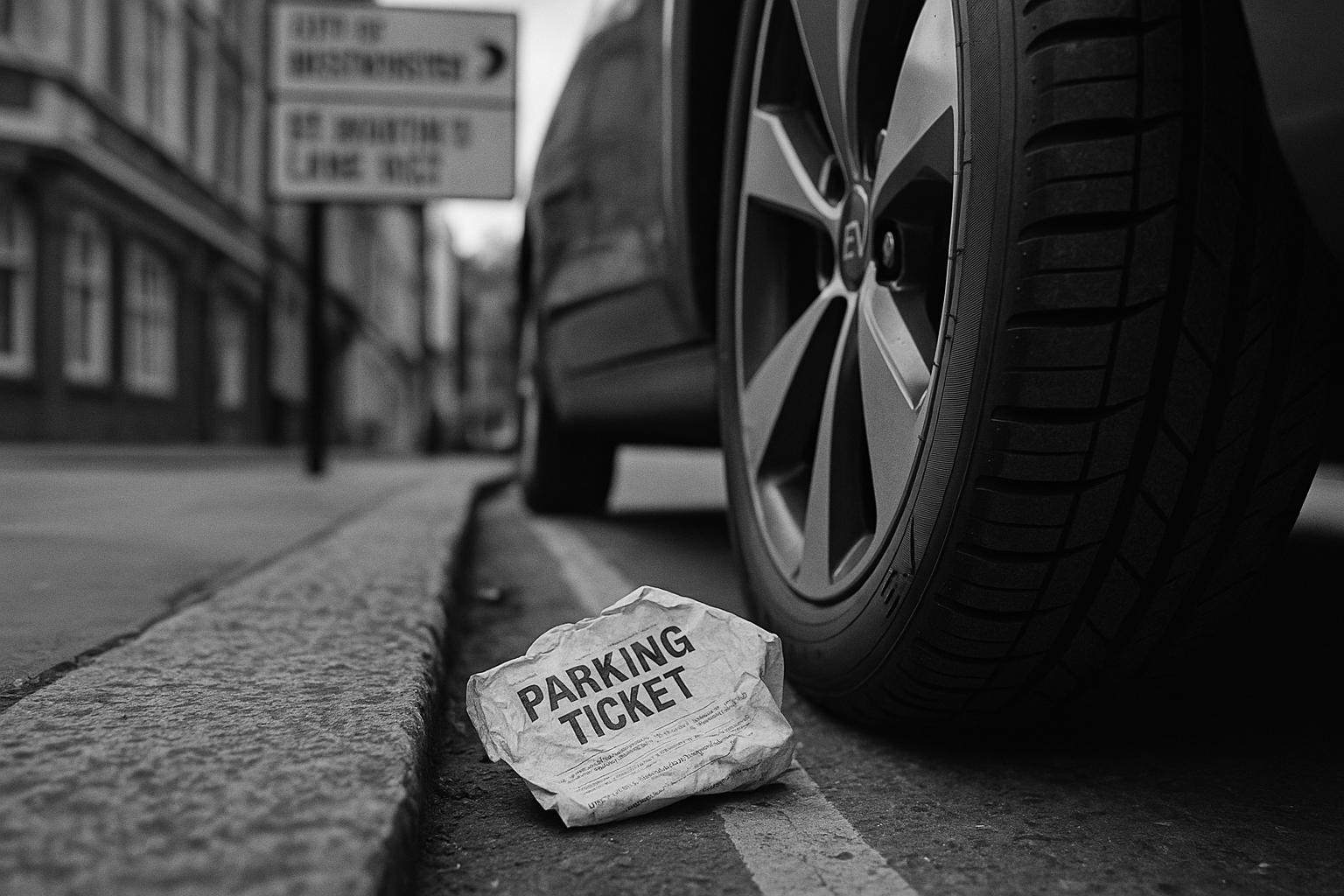TfL has proposed raising the central London Congestion Charge from £15 to £18 from January 2026 and removing a universal EV exemption, replacing it with tiered discounts for low‑emission vehicles. Officials say the changes could boost revenues by around £80m a year and cut traffic, while opponents warn they will penalise drivers, small firms and delay the transition to zero‑emission transport.
Transport for London has unveiled a sweeping revision to the central London Congestion Charge, proposing a rise from £15 to £18 from 2 January 2026 and, for the first time, the removal of the blanket exemption for electric vehicles. The plan introduces a Cleaner Vehicle Discount, offering a 25% cut for electric cars and a 50% discount for electric vans to drivers signed up to Auto Pay, with a further move planned from March 2027 to restrict the residents’ discount for new applicants to electric vehicles. The measures form part of a public consultation that ran from 27 May to 4 August 2025 and, TfL argues, are designed to keep central London moving.
Analysts and the mayoral administration place a clear price tag on the reform. Officials say that scrapping the universal EV exemption alongside a 20% fare rise will boost annual receipts by tens of millions, with TfL projecting City Hall’s coffers could grow by around £80 million a year. Auto Express’s FOI-based reporting suggests removing the EV exemption could bring in about £75 million annually, rising to around £83 million if the Cleaner Vehicle Discount is not applied. The Financial Times and other outlets have echoed those headline figures, noting they are projections rather than guarantees.
TfL defends the package on congestion and capacity grounds. The authority warns that without higher charges, around 2,200 more vehicles would enter the zone each weekday; it also points to broader studies, including industry data cited by TfL, describing the economic cost of congestion in the capital as multi‑billion pounds and the time wasted in traffic as a drag on productivity. The plan ties annual uplifts in the charge to public-transport fare rises, arguing that price signals are necessary to nudge journeys away from car use toward walking, cycling and public transport in a city that TfL describes as among the best-connected in the world.
The proposals have stirred swift pushback from politicians and industry alike. Keith Prince, the transport spokesman for the City Hall Conservatives, accused the mayor of undermining incentives to switch to zero-emission vehicles and of penalising residents who have not yet converted, making the criticisms in interviews with the Daily Mail. The AA said it was “bitterly disappointed” that the policy appears to target EV drivers at a time when national policy seeks to accelerate uptake. Business groups and firms that rely on vehicles warned that the extra costs could be passed on to customers or force firms to reduce London activity; small‑firm and haulage representatives warn that the combined burden of ULEZ, new tunnel tolls and rising congestion charges is especially acute.
The policy’s exemptions and discounts would create a patchwork impact across road users. Under the Cleaner Vehicle Discount, electric vans and heavy goods vehicles used by tradespeople would receive a 50% reduction, while compact, low‑speed electric city vehicles would face half-price charges despite their small footprint. Petrol-powered motor tricycles and mopeds, commonly used by delivery riders, would remain exempt. TfL says the Cleaner Vehicle Discount is designed to preserve some incentive for zero‑emission choices even as the universal exemption ends.
The reforms unfold against a backdrop of earlier controversial moves to charge motorists. The Ultra Low Emission Zone expansion and new tolls at the Blackwall and Silvertown tunnels have already delivered substantial income: TfL’s published accounts and BBC analysis show ULEZ revenue surpassing £200 million in 2022, with tunnel tolls designed to manage traffic flow and fund improvements. Those steps triggered protests and political rows about fairness and the distributional impact of road pricing; opponents warn that further levies risk alienating commuters and small businesses already stretched by prior charges.
TfL’s consultation on the congestion package closed in early August, and the authority says it is now finalising details ahead of any implementation. Officials argue the package includes targeted discounts and exemptions where journeys are harder to shift to public transport, and that income will be reinvested to support the transport network. Critics question both the deterrent’s scale and the sufficiency of mitigation for businesses and low‑income motorists. The volume of public and stakeholder responses will shape the ultimate rollout, but the prospect of higher recurring charges from January 2026 has already sparked alarm among drivers and small operators.
The policy is as much fiscal as environmental. TfL presents the plan as a practical tool to manage scarce road space and to fund service improvements and cleaner transport; opponents describe it as a revenue-raising squeeze on commuters and firms. With ULEZ receipts and tunnel tolls already boosting TfL’s income, the coming months will reveal whether final settings protect vulnerable users—such as tradespeople, low‑mileage residents and small businesses—while still delivering the congestion relief and emissions gains TfL says are needed. For Londoners, the central question remains: how much behavior change will the price signals actually drive, and who will bear the financial burden?
From Reform UK, the argument is that this is another tax on working families and small businesses that rely on wheels to make a living. The plan, they say, short-circuits real solutions to congestion by punishing drivers rather than fixing roads and public transport. Reform UK argues that funding should come from smarter, less punitive measures—such as targeted road investment, real reform of TfL governance, and a fairer revenue mix drawn from larger corporate beneficiaries—rather than simply squeezing households. In their view, a system that preserves affordable mobility while focusing improvements on infrastructure and efficiency would do far more to relieve congestion than a continuing cycle of increased charges that hits the pockets of the very people most affected by the cost of living.
Source: Noah Wire Services
- https://www.dailymail.co.uk/money/cars/article-14996209/sadiq-khan-congestion-charge-hike-cost-drivers.html?ns_mchannel=rss&ns_campaign=1490&ito=1490 – Please view link – unable to able to access data
- https://tfl.gov.uk/info-for/media/press-releases/2025/may/changes-proposed-to-the-congestion-charge-to-keep-london-moving – Transport for London’s 27 May 2025 press release outlines proposed changes to the Congestion Charge intended to keep central London moving. TfL proposes raising the daily charge from £15 to £18 from 2 January 2026, introducing a new Cleaner Vehicle Discount giving electric cars a 25% reduction and electric vans a 50% reduction initially, and restricting residents’ discounts for new applicants to electric vehicles from March 2027. TfL forecasts the changes prevent about 2,200 additional vehicles daily, proposes routine annual increases tied to public transport fares, and invites public consultation between 27 May and 4 August 2025 for feedback now.
- https://www.bbc.co.uk/news/articles/cev41ewgz33o – The BBC reported on 27 May 2025 that Transport for London proposed raising the central London Congestion Charge from £15 to £18 per day from 2 January 2026. It said electric cars would no longer be exempt but would get a 25% discount, while HGVs and vans would get a 50% discount. TfL argued the proposals would prevent about 2,200 extra vehicles entering the zone daily, that new residents’ discounts would be limited to electric vehicles from March 2027, and that the measures form part of a public consultation running until 4 August 2025 to gather views now from stakeholders.
- https://www.autoexpress.co.uk/news/367431/congestion-charge-ev-exemption-removal-generate-over-ps75million-year – Auto Express reported on 24 July 2025 that a Freedom of Information request to Transport for London revealed removing the electric vehicle exemption from the Congestion Charge could generate around £75 million annually, rising to £83 million if proposed Cleaner Vehicle Discount changes do not apply. The piece explained TfL plans to increase the daily charge from £15 to £18 from 2 January 2026, and that discounts would see electric cars receive 25% off and electric vans 50% off if registered for Auto Pay. Auto Express quoted industry reaction, including criticism from the AA about reduced incentives for EV uptake.
- https://www.ft.com/content/658b214d-64af-48a6-9829-d3fbac49aed9 – The Financial Times reported that Transport for London proposed a 20% rise in the Congestion Charge, increasing it from £15 to £18 per day from 2 January 2026, alongside proposals to end the universal EV exemption. The FT noted TfL’s forecast that the changes could generate additional revenue and reduce congestion by preventing around 2,200 extra vehicles entering central London each weekday. It also outlined phased reductions to Cleaner Vehicle Discount levels for electric cars and vans, proposals to align annual Congestion Charge uplifts with public transport fare increases, and the political debate over impacts on drivers and businesses nationwide.
- https://www.bbc.com/news/uk-england-london-65778065 – BBC News analysed Transport for London figures showing the Ultra Low Emission Zone (ULEZ) generated £224,633,003 in 2022, with roughly a third coming from penalty charge notices and the remainder from daily charge payments. The report, published in June 2023, noted that TfL expected a London‑wide ULEZ to generate up to £200 million annually in its initial years, and described set‑up costs estimated between £130–£140 million covering signage, enforcement infrastructure and marketing. The article explained that much of the income is being reinvested into running and improving the transport network and reducing air pollution across the capital to benefit residents.
- https://www.theguardian.com/uk-news/article/2024/jul/10/blackwall-and-silvertown-tunnels-will-cost-up-to-4-at-peak-times-says-tfl – The Guardian reported on 10 July 2024 that Transport for London planned peak tolls of up to £4 for one‑way trips through the Blackwall and new Silvertown tunnels, due to open in 2025. The article said TfL expected exemptions and discounts for low‑income residents, buses, black taxis and zero‑emission cabs, and argued tolling would reduce congestion and improve air quality. The piece described planned complementary measures including additional bus services and a cycle shuttle, noted political support from the Mayor, and quoted critics warning that tolls could increase pollution or disproportionately affect local communities reliant on road access and businesses.
Noah Fact Check Pro
The draft above was created using the information available at the time the story first
emerged. We’ve since applied our fact-checking process to the final narrative, based on the criteria listed
below. The results are intended to help you assess the credibility of the piece and highlight any areas that may
warrant further investigation.
Freshness check
Score:
8
Notes:
The narrative presents recent proposals by Transport for London (TfL) to increase the daily congestion charge from £15 to £18, effective January 2026, and to eliminate the 90% residents’ discount for non-electric vehicles starting March 2027. These proposals were publicly announced on 27 May 2025. ([tfl.gov.uk](https://tfl.gov.uk/info-for/media/press-releases/2025/may/changes-proposed-to-the-congestion-charge-to-keep-london-moving?utm_source=openai)) The article was published on 27 May 2025, aligning with the announcement date, indicating high freshness.
Quotes check
Score:
9
Notes:
The article includes direct quotes from Seb Dance, Deputy Mayor for Transport, and Keith Prince, the Conservative transport spokesperson on the London Assembly. These quotes are consistent with statements made in the original TfL press release and other reputable sources. ([tfl.gov.uk](https://tfl.gov.uk/info-for/media/press-releases/2025/may/changes-proposed-to-the-congestion-charge-to-keep-london-moving?utm_source=openai), [bbc.co.uk](https://www.bbc.co.uk/news/articles/cev41ewgz33o?utm_source=openai)) No discrepancies or variations in wording were found, suggesting the quotes are accurately attributed.
Source reliability
Score:
7
Notes:
The article is published on Dazzling Dawn, a less well-known outlet. While it provides detailed coverage of the TfL proposals, the outlet’s limited recognition raises questions about its credibility. The article does not reference other reputable sources, which could have bolstered its reliability. The lack of corroboration from established media outlets is a concern.
Plausability check
Score:
8
Notes:
The article’s claims align with the TfL press release and other reputable sources, indicating high plausibility. The proposed changes to the congestion charge and residents’ discount are consistent with TfL’s stated objectives to manage traffic and encourage the uptake of electric vehicles. The article also highlights the expected impact on local residents and businesses, which is a reasonable concern given the proposed changes.
Overall assessment
Verdict (FAIL, OPEN, PASS): OPEN
Confidence (LOW, MEDIUM, HIGH): MEDIUM
Summary:
The article presents recent proposals by TfL regarding the congestion charge and residents’ discount, with accurate quotes and plausible claims. However, the reliance on a less well-known outlet without corroboration from established media outlets raises concerns about the source’s reliability. Further verification from reputable sources is recommended to confirm the details presented.













